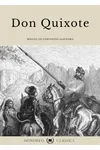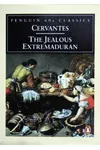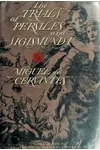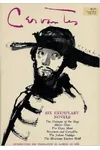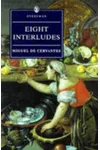Picture a Spanish storyteller who tilted at windmills and changed literature forever—meet Miguel de Cervantes Saavedra! Born in 1547, Cervantes penned Don Quixote, often hailed as the first modern novel. His life, a whirlwind of adventure, captivity, and resilience, fueled stories that still captivate readers centuries later.
From soldier to slave to literary genius, Cervantes’ journey is as epic as his knight-errant’s quests. Let’s dive into the life and legacy of this literary trailblazer whose wit and wisdom continue to inspire.
The Making of Miguel de Cervantes Saavedra
Born in Alcalá de Henares, Spain, in 1547, Miguel de Cervantes grew up in a modest family, the son of a surgeon. His early life was marked by constant moves and financial struggles, but young Miguel found solace in books. By his twenties, he was a soldier, fighting in the Battle of Lepanto in 1571, where he lost the use of his left hand. Captured by Barbary pirates in 1575, he spent five years as a slave in Algiers, plotting daring escapes. These experiences shaped his grit and infused his writing with vivid realism.
After his ransom and return to Spain, Cervantes turned to writing, starting with plays and poetry. His early works, like the pastoral novel La Galatea, showed promise, but financial woes and a stint in prison for mismanaging tax funds pushed him to create his masterpiece.
Miguel de Cervantes Saavedra’s Unforgettable Stories
Cervantes’ Don Quixote, published in two parts (1605 and 1615), redefined storytelling. The tale of an idealistic knight and his loyal squire, Sancho Panza, blends humor, satire, and humanity. Its innovative structure—mixing metafiction, layered narratives, and psychological depth—earned it the title of the first modern novel. Cervantes poked fun at chivalric romances while celebrating the dreamers who chase impossible dreams.
Beyond Don Quixote, Cervantes wrote Exemplary Novels (1613), a collection of short stories showcasing his versatility. From the romantic The Gypsy Girl to the satirical The Dialogue of the Dogs, these tales explore love, deception, and morality with sharp wit. His plays, like The Siege of Numantia, dramatized historical events, though they were less successful. Cervantes’ style—ironic, empathetic, and grounded in human folly—made his work timeless.
His writing reflected his turbulent life, weaving themes of freedom, identity, and perseverance. Whether through Quixote’s delusions or Sancho’s pragmatism, Cervantes captured the complexities of the human spirit, making his stories resonate across cultures.
Why Miguel de Cervantes Saavedra Matters
Cervantes’ influence on literature is colossal. Don Quixote inspired writers like Dickens, Dostoevsky, and Rushdie, shaping the novel as a genre. Its exploration of reality versus illusion speaks to universal truths, earning it a place in classrooms and bookshops worldwide. Cervantes’ ability to blend humor with profound insight made him a pioneer of literary realism and satire.
His legacy endures in Spain, where he’s a national hero, and globally, as Don Quixote is translated into countless languages. Cervantes showed that stories could challenge norms, bridge divides, and celebrate the human condition, cementing his place as a literary giant.
About Miguel de Cervantes Saavedra
- Birth: September 29, 1547, Alcalá de Henares, Spain
- Key Works: Don Quixote, Exemplary Novels, La Galatea
- Notable Fact: Survived five years as a slave in Algiers
- Death: April 22, 1616, Madrid, Spain
Snag a copy of Don Quixote and dive into Cervantes’ world of wit, adventure, and timeless wisdom!


